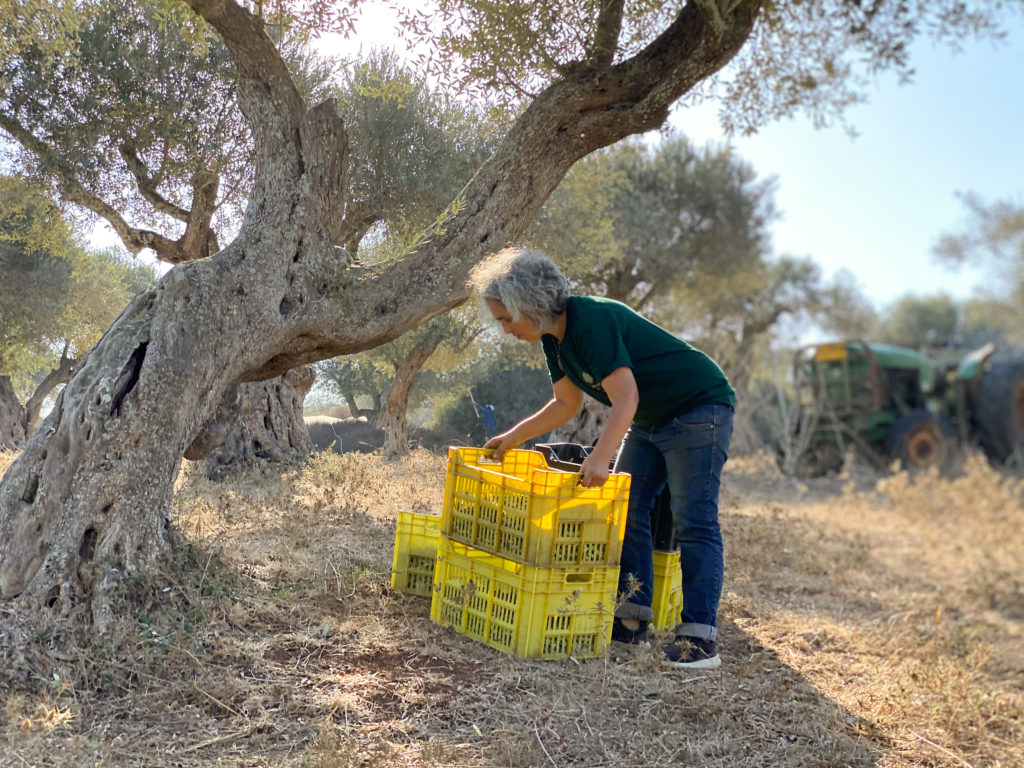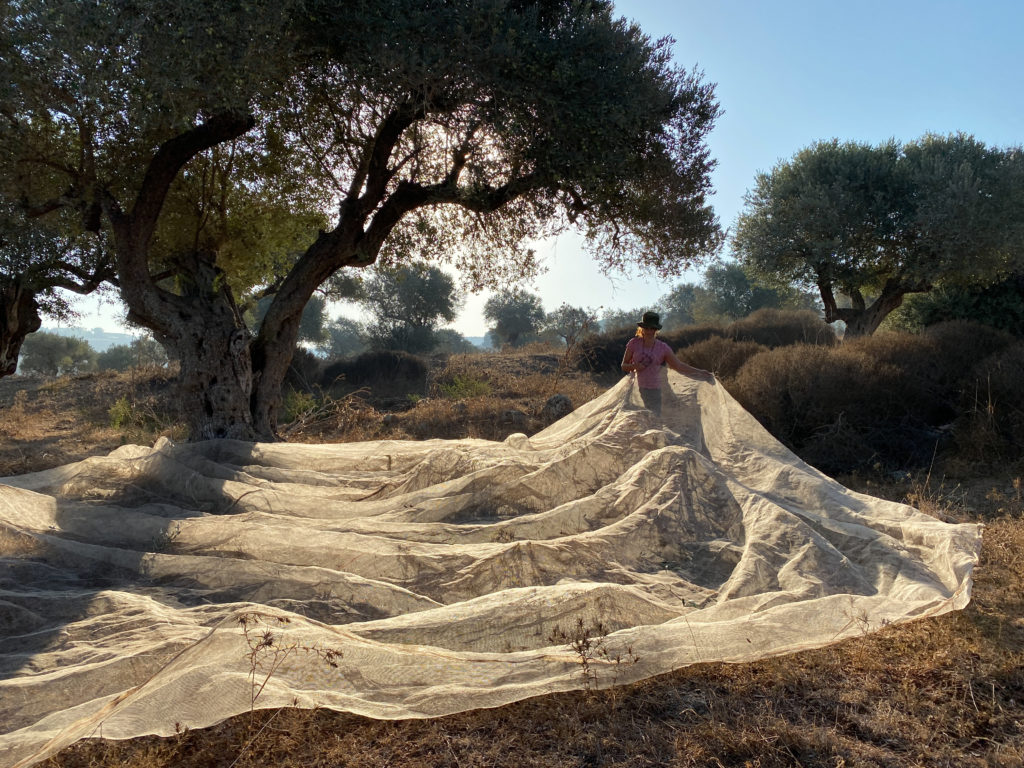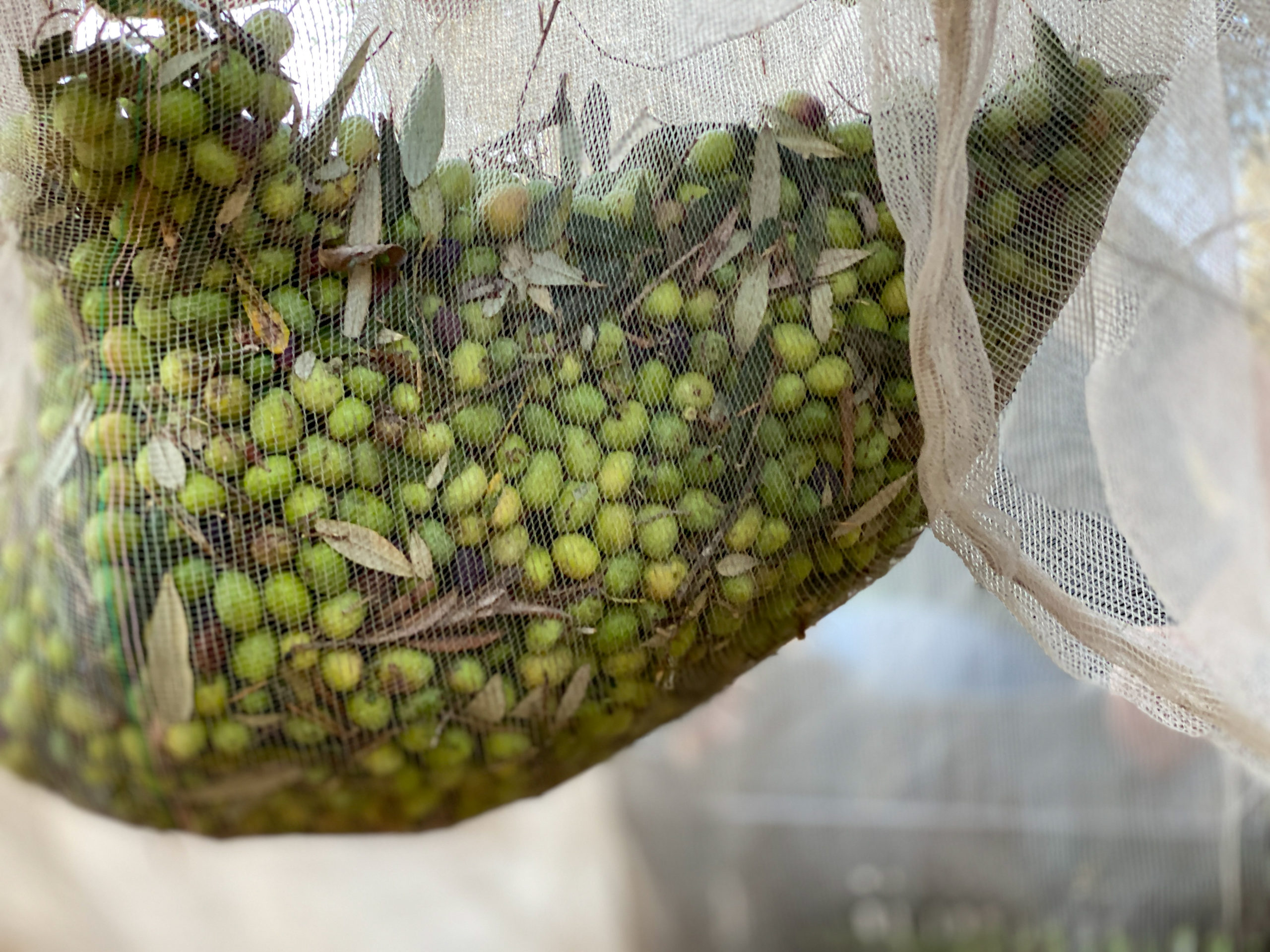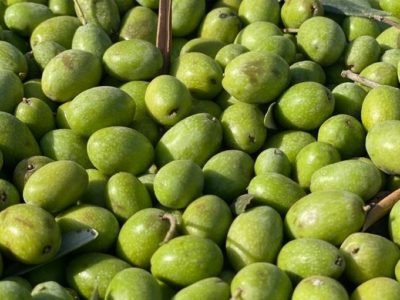The olive tree, or Olea europaea, belongs to the biome of the Mediterranean woodlands and has been growing in our area for millions of years. People have collected its fruit since early history: the oldest remains of olives, which are from 790,000, were found here in Israel, in the archeological site Daughters of Jacob Bridge.
The oil made from the tree’s fruit is among the first vegetable fats the inhabitants of the Mediterranean region produced. An excavation at Ein Zippori unearthed the earliest evidence of the use of olive oil in the world: residue of olive oil in clay pots created by primeval man, who was only beginning to learn how to make such jars in the Galilee in the Neolithic period, about 8,000 years ago. The oil press that’s considered the oldest in the world was discovered in an underwater excavation off the shores of Haifa, and it is dated to the Chalcolithic period, about 6,500 years ago.
As the olive tree was part of the natural biome of the Mediterranean Basin, caravans of merchants or ships moving east and west across the sea did not need to transfer the tree and its fruit – only information about its wonders and benefits. The inhabitants of each area cultivated olive trees according to their preferences and needs, leading to the development of an astounding number of varieties in a relatively small area: about 1,400 varieties with distinct genetic characteristics are known to science.

Yet despite its long history in the region, olive oil only entered the Jewish-Israeli kitchen through the back door. In his memoir, chef Israel Aharoni mentions that until 1984-5 one could not buy extra virgin olive oil in regular stores, but only directly from the oil press or from farmers in Arab villages. The actual introduction into the modern Jewish-Israeli kitchen occurred via the local Italian food trend in the 1990s. The first shops to sell extra virgin olive oil, and not “refined” oil, were health food shops (according to Shalom Ashush, owner of the organic store “Teva Gav”).
The dominant variety in the traditional olive orchards of the area is the Souri (Syrian), or by its original name, Zuri. According to one claim, the name is derived from the Lebanese port of Tyre (in Hebrew, Zur), through which the local, high-quality oil was once shipped to the entire Mediterranean Basin. Another local cultivar is the Nabali, originally from the city of Nablus, and there are also less common varieties such as the Melisi and Zahri, which were used as pollinators for the dominant variety (providing the male pollen to fertilize female flowers).
After the foundation of Israel, the development of intensive agriculture in the Jewish sector led to agricultural research of olive farming. This included the incorporation of advanced growing techniques, and later the development of new cultivars for cured olives and olive oil. Today, olive farming occupies more land than any other agricultural industry in Israel. It spans over 60,000 acres of rain-fed orchards, and around 20,000 acres of irrigated land, of which 5,000 acres are used to grow olives for eating.
Climate Crisis: Innovation in the Service of Traditional Olive Orchards
One of the principal contributors to the development of olive research in Israel and abroad is professor Shimon Lavee, who was the leading researcher in the field for 50 years. Lavee dedicated much of his career to olive breeding, creating several unique cultivars. His most popular creation, the Barnea, has become an international bestseller in the new intensive olive orchards. Lavee also created additional cultivars for oil production, such as the Ma’alot — a subspecies of the Souri that is resistant to Spilocea oleagina, a pathogen causing the disease Olive Peacock Spot — and the Askal, a cross of Barnea and Greek Kalamata. He also developed additional varieties for producing cured olives, such as the Santa, Novo and Kadshon, and his latest creation, the Lavee.
In addition to the development of new varieties, there is an ongoing process in the industry of acclimatization of selected existing varieties from the Mediterranean Basin, and an effort to identify high-performing varieties that are naturally suitable for super-intensive growing methods such as precision irrigation, fertilization, and the use of advanced pruning and harvesting equipment. High costs and the scarcity of workers motivate this process in the sector of growing olives for eating, as well. Lavee’s successor, Dr. Giora Ben-Ari, has been working with his research team to integrate advanced molecular methods that help identify resistant varieties that are better fitting for super-intensive orchards and changing climate conditions.
Another contribution made by Lavee was the integration of innovative approaches to traditional farming, such as an investigation of the effect of drip irrigation on olive oil quality and yields. This research becomes all the more important with climate change, which has gravely affected traditional, water-fed agriculture, causing a deterioration in crops and quality.
The accelerated development of the Galilee’s cities and villages, as well economic unprofitability, have brought traditional olive groves to the verge of extinction. Yet the survival of traditional oil agriculture is crucial for several reasons: alongside its contribution to tourism, culture and economy, it has environmental benefits such as carbon dioxide fixation, reducing air pollution, enhancing rainwater infiltration into the ground and reducing soil erosion and surface runoff, promoting the diversity of local flora and fauna, etc.

A few valuable projects are aimed at preserving and promoting the area’s traditionally produced olive oil. ARTOLIO, an especially moving project, connects artisanal cultivators of olives for oil from countries like Israel, Palestine, Jordan, Cyprus, Greece, and Spain. It assists farmers in marketing, finance, and complying with regulations, and helps them create a common branding with a personal signature and a quality rank, so they can remain competitive and survive.
The Israeli Olive Board has also begun promoting regional specialization among traditional rain-fed orchards in the Galilee, in order to create a marketing lever. The project aims to set rigorous growing, harvesting, production and storage standards that will result in improved oil quality and grant local traditional orchards international reputation and a PDO, or Protected Designation of Origin, certificate.
According to Dr. Mugira Yunes, chief instructor of the Ministry of Agriculture, the current trend in the Arab traditional olive industry includes a transition to conservation tillage to prevent soil erosion, an introduction of new pollinating varieties like Arbequina and Souri olive orchards, a search for new pesticides that are friendlier to humans and the environment, and a thorough revision of the entire production and storage process of olive oil, to improve oil quality.
Intensive orchards, too, experience economic challenges due to climate change, mostly a decrease in yields. Dr. Arnon Dag, a senior researcher at the Volcani Agriculture Institute, says the current trend among Jewish modern growers is a transition to super-intensive farming: densely planted orchards and advanced mechanical harvesting. There is also an effort to locate new varieties that will suit this farming method, as well as varieties that require short periods of cold weather in winter. In addition, scientists continue to investigate the tree’s mineral needs and attempt to enhance irrigation precision for a healthier fruit and a higher-quality oil.
The Future: Specialization in Olive Oil Markets
The last decade saw a major change in perception, in Israeli olive oil producers and consumers alike. There is a growing awareness of the skills required to be an olive oil producer and of cultivar specialization, as well as recognition of each variety’s culinary uses and health benefits. Israeli oil farmers undergo professional training in growing, production, storage, and sensory tasting of olive oil. A growing number of Israeli olive oils have gained international reputation, winning prestigious competitions around the world. Whereas in the past, olive oil could only be bought in 4.5-gallon containers, today it is sold in prestigiously designed bottles and cans. More restaurants and chefs take pride in pairing olive oils with dishes, use quality olive oil even in desserts, and mention cultivators and cultivars on the menu.
As agricultural development in Israel continues, I believe we should continue to disseminate information about the health benefits of the Mediterranean diet in general, and olive oil in particular. Exposure to different varieties of olive oil and to their culinary benefits, whether as a fatty base or as flavoring, and highlighting the multiple benefits of olive oil over other vegetable oils, will promote ample and intelligent use, helping customers choose the right oil for cold seasoning, baking, stir-frying, cooking or deep frying.
Ayala Noy Meir is an agronomist with an MA in Landscape Management, and an expert in organoleptic (tasting) assessment and olive oil quality. She is a Sensory Panel Leader certified by the International Olive Council, and a manager of an organic/biodynamic farm and the family olive oil press Rish Lakish in Tzipori.


